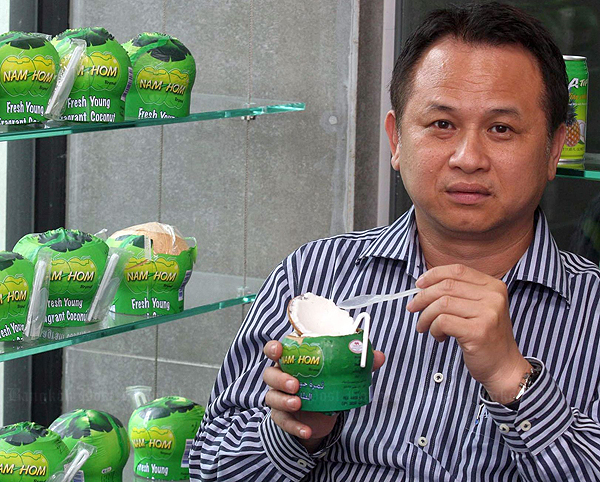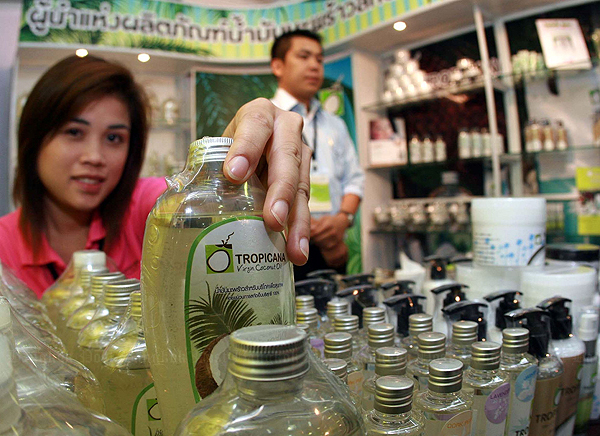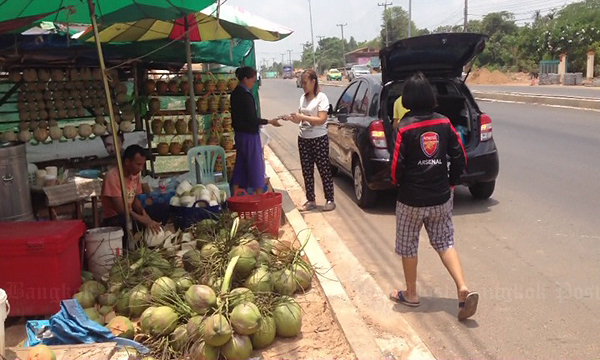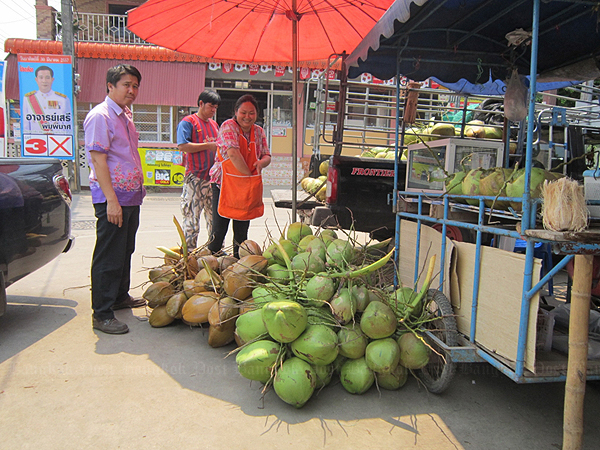
By Ajarn Helen Jandamit
Photos courtesy of Bangkok Post
University Tips is here to help you prepare for the English exams and tests that are coming your way. It gives you practise answering questions similar to those you may have at school and also on the University Entrance Examination.
Read the following story from the Bangkok Post. Then, answer the questions that follow.
There are not many sights as familiar in Thailand as the coconut palm tree. It bears fruit with juice that is good to drink and flesh that can be used in cooking. The coconut palm is an emblem of the seaside. The taller the coconut trees, the older the community in which the coconut grove is located. And coconut trees are marvellously versatile.
LONG HISTORY
The coconut palm answers all kinds of needs, depending on the character of the society using it. Besides drinking coconut juice and extracting coconut cream from the flesh, Pacific islanders also use the shells as vessels to hold water. People in the Maldives, Indonesia, Malaysia and Thailand all use the same kind of grater to shred coconuts.
There is evidence that Thais only learned to consume coconut cream about 200 years ago, but the flesh of the coconut has been used here for more than 700 years. Ruins from the Sukhothai period have revealed ceramic lamps that used coconut oil as fuel.

SAFE AND TASTY
Coconut oil can be used for frying all kinds of food, including old-fashioned desserts and snacks like khao taen — steamed sticky rice pressed into flat, round patties that are dried before frying. After being fried until crisp, palm sugar is dribbled over them.
When alternative vegetable oils arrived, many cooks stopped using coconut oil because industrially-produced oils replaced it. These days, doctors recommend it as the best cooking oil.
In the past, when children were learning to swim in a river or a canal, adults would take two old coconuts, strip off some of the fibres from the husk and use the strands to tie the shells together tightly. The coconuts were very buoyant, so they made a good life preserver.
MUSIC AND BELIEF
If the husk is removed from a very mature coconut and the hard shell of the nut inside is big and well-formed, it can be used to make the saw uu, a traditional musical instrument. The sound it produces is full and rich.
At Buddhist temples that make auspicious objects, the shells are cut into pieces and engraved with images of Rahu eating the moon. These carvings are believed to protect those who carry them from danger.
Thais and their coconut trees have a close relationship that extends back through many centuries and remains strong today.
Exercises
Section 1
Read the story and answer the following multiple-choice questions.
1. Which of the following is NOT mentioned in the story?
a. Food and drink made from coconuts.
b. Useful items made from coconut palms.
c. Prices of coconut palms.
2. Which of the following best describes the writer’s attitude to coconuts?
a. Coconuts are medicinal.
b. Coconuts are versatile.
c. Coconuts are auspicious.
3. When did Thai people learn to consume coconut cream, according to the story?
a. About two decades ago.
b. About a century ago.
c. About two centuries ago.
4. What is khao taen?
a. It’s a type of rice.
b. It’s a kind of snack.
c. It’s a piece of clothing.
5. What are believed to protect those who carry them from danger?
a. Pieces of coconut engraved with images of Rahu eating the moon.
b. Ceramic lamps that burned coconut oil.
c. Old-fashioned desserts and snacks.
6. How long has coconut flesh been used in Thailand?
a. For about 200 years.
b. For more than 700 years.
c. For more than 900 years.
7. According to this feature, why is coconut oil becoming popular again?
a. Because it can be used as fuel for lamps.
b. Because it can be used in traditional Thai massages.
c. Because doctors recommend it as the best cooking oil.
8. Why were coconuts used as life preservers?
a. They were buoyant.
b. They were sacred.
c. They were a traditional symbol of survival.
Section 2
Read the story and decide whether the following statements are true or false.
9. For many people, coconut palms symbolise the seaside.
………………………
10. When alternative vegetable oils were introduced, cooks largely abandoned coconut oil.
………………………
11. All kinds of food can be fried in coconut oil, according to the story.
………………………
12. Coconuts cannot float in water.
………………………
13. According to the story, ruins from the Ayutthaya period have revealed ceramic lamps that burned coconut oil.
………………………

Section 3
Fill in the blanks in the following passage with the correct words from the choices given.
Old coconut trees were used at large piers …..14….. fishing boats docked. Coconut tree trunks were used …..15….. buffers. The boats could be tied to them to …..16….. them hitting the pier. Prices for coconut tree trunks increased, as people started …..17….. them to cut into planks for …..18….. houses. Coconuts can be grown …..19….. all regions of Thailand.
14.
a. who
b. whose
c. where
15.
a. at
b. as
c. on
16.
a. prevention
b. preventive
c. prevent
17.
a. bought
b. buying
c. buy
18.
a. build
b. building
c. built
19.
a. in
b. at
c. next
Section 4
Specify whether each of the following words is used in the story as a verb, noun, adjective or adverb.
20. sticky ……………….
21. fuel ……………….
22. swim ……………….
23. tightly ……………….
24. danger ……………….

Vocabulary
- emblem (n): something that represents a perfect example or a principle
versatile (adj): having many different uses
husk (n): the dry outer covering of the coconut
buoyant (adj): floating, able to float or able to keep things floating
engrave (v): to cut words or designs on wood, stone, metal, etc.


